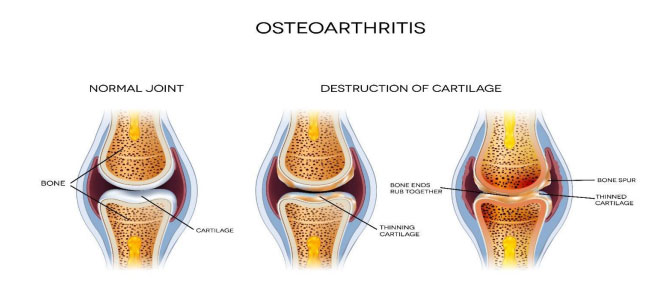Osteoarthritis (OA) – In the summers, I spent time with my grandparents in South Carolina. If you live on the east coast, then you know that thunderstorms are prevalent in the summers. I will always remember my grandma complaining about her achy knees on a cloudless, sunny, hot humid day. Whenever her knees ached, she announced, “A storm is coming!” Her predictions never ceased to amaze my cousins and me, for sure enough, by late afternoon, it was pouring down rain!
Thirty years later as I treat pain management patients, many of the patients repeat the same phrase to me, “A storm is coming,” just like my grandmother. Now, as a mature educated adult, I realize that my grandma felt the change in the barometric pressure that indicates an approaching storm.
Read the details below that explains the significance of osteoarthritis.
What is osteoarthritis (OA)?
▪ Osteoarthritis, also known as degenerative joint disease, is the most common form of arthritis, especially among the elderly.
▪ Caused by the wearing down of cartilage as we age, movement becomes more difficult.
o During this process, the bones may break or chip, creating spurs.
o Eventually the bones will rub against one another, leading to joint damage and more pain.
▪ Unlike rheumatoid arthritis, osteoarthritis is not an autoimmune disease; it does not attack the entire body.
▪ OA tends to affect the larger weight bearing joints (shoulders, knees, hips, spine, small joints of the hands and thumbs).
Diagnosis
▪ This condition can be diagnosed during a physician’s exam and seen on an X-ray, MRI, or CT.
▪ Labs are not helpful in diagnosing OA but may be used to rule out other forms of arthritis.
Signs and symptoms
▪ Stiffness that tends to improve with movement
▪ Clicking and achy joints
▪ Swelling of the joints
▪ Increased pain after activity
Treatment
▪ Manage the symptoms
▪ Improve joint mobility
▪ Develop flexibility
▪ Maintain a healthy weight
▪ Exercise as much as possible
▪ Take NSAIDs when necessary
▪ Have a corticosteroid shot for relief
▪ Enjoy a massage
▪ Apply hot or cold compresses
▪ Use assistive devices (walker or cane) if helpful
Since osteoarthritis has no cure, the treatment plan is to:
Please follow up with your general practitioner, physician, or pain management specialist for standardized treatment.
When the joint pain becomes unbearable, please seek a referral to an orthopedic surgeon to discuss the possibility of surgery to repair or replace the joints.

References
National Institute of Aging. (2017). Osteoarthritis. https://www.nia.nih.gov/health/osteoarthritis Tefi. (2019). Osteoarthritis, destruction of cartilage. Healthy joint and unhealthy joint anatomy. [Illustration].
